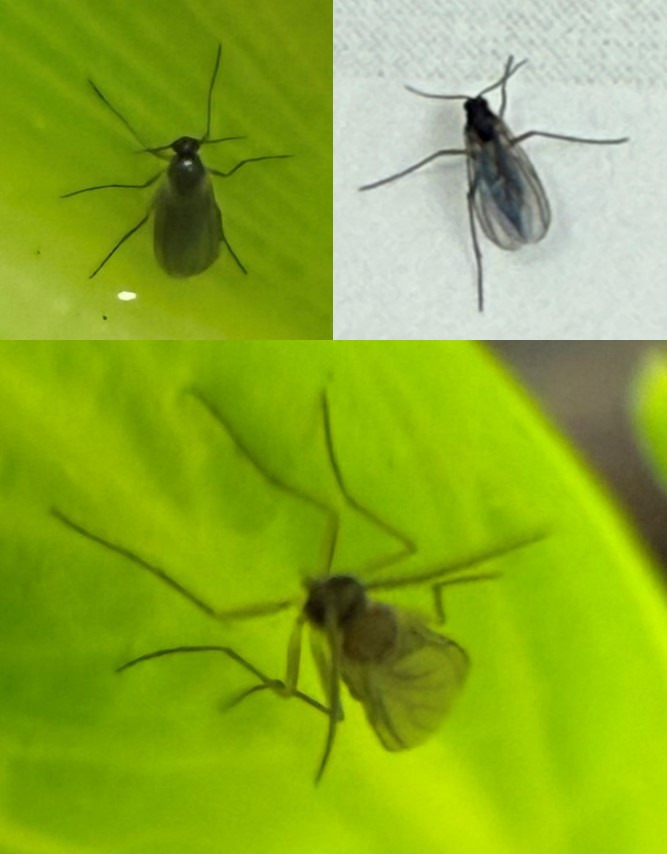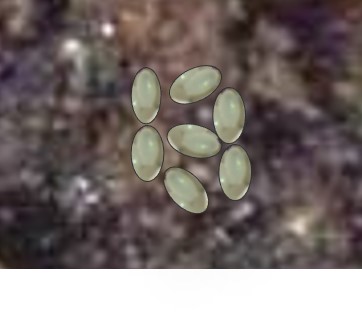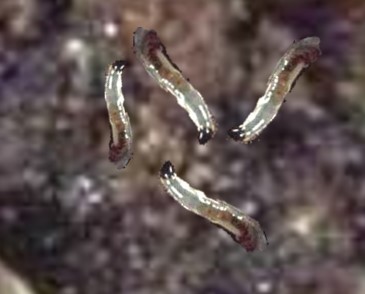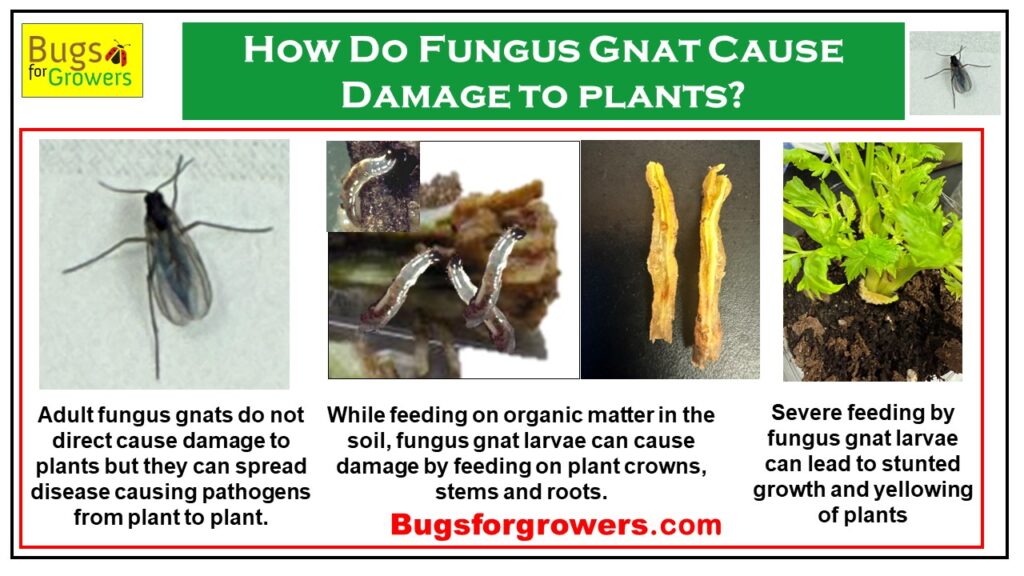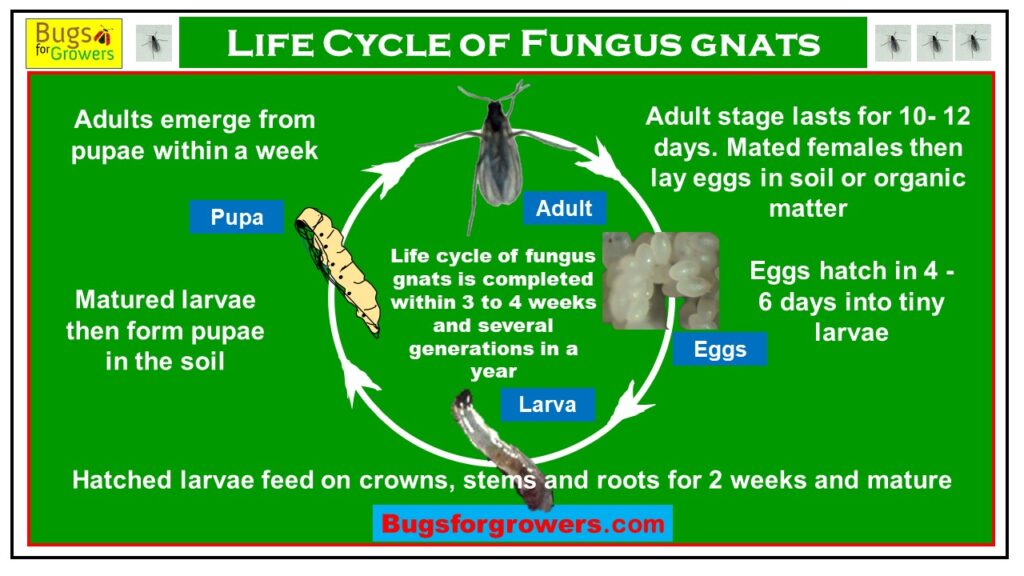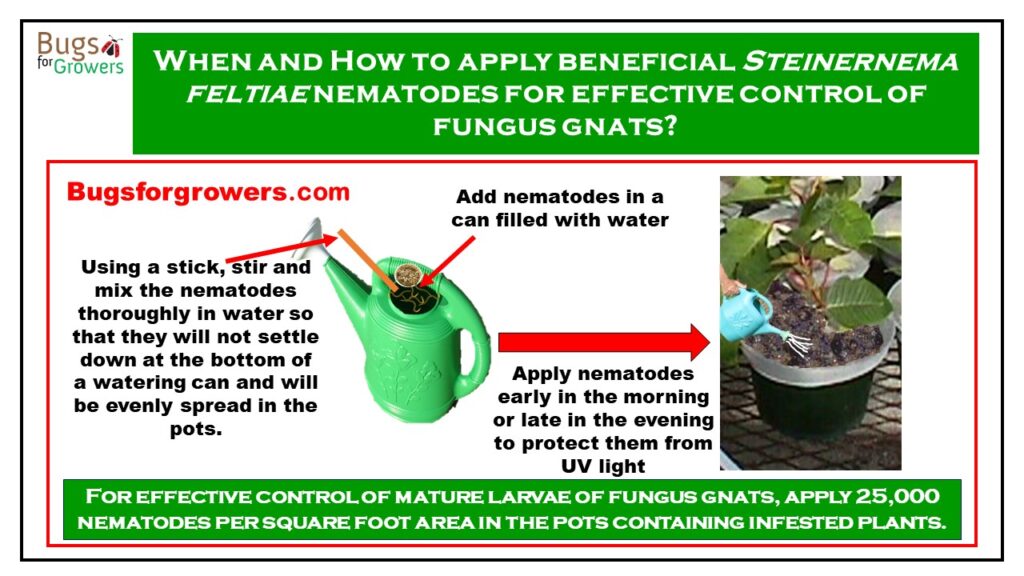Watch YouTube video on biological control of fungus gnats with beneficial nematodes.
What are fungus gnats?
Fungus gnats (Bradysia coprophila, B. impatiens, B. difformis) are small, mosquito-like flies found in damp areas, decaying vegetation, and algae in greenhouses, nurseries, and indoor landscapes. Adults measure 3-4 mm, with black or gray bodies and clear wings (Photo 1). Their eggs are tiny, oval, shiny white, and semi-transparent (Photo 2). Larvae are slender, legless maggots with translucent bodies and black head capsules (Photo 3), while pupae are small and brown.
Photo 1. Adults of fungus gnats.
Photo 2. Fungus gnat eggs.
Photo 3. Fungus gnat larvae.
How do fungus gnats cause damage?
Fungus gnats are significant pests of ornamental plants in greenhouses and indoor settings. While adults are harmless but annoying. However, larvae while feeding on organic matter, can cause severe damage to plant crowns, stems and roots. They chew roots and tunnel into stems, reducing water and nutrient uptake. This leads to stunted growth, yellowing, leaf drop, and plant death (Photo 4). Additionally, both larvae and adults spread plant diseases like Botrytis blight, Fusarium wilt, Pythium blight, and Verticillium wilt, increasing economic losses for growers.
Photo 4. Damage caused by fungus gnats.
Life cycle of fungus gnats
Fungus gnats undergo four stages: egg, larva, pupa, and adult. Females lay over 200 eggs on soil or growing media. Within a week, eggs hatch into larvae that mature in two weeks. Pupation occurs near the soil surface, and adults emerge within a week. The entire cycle takes 20-25 days (Photo 5), with multiple overlapping generations per year in warm greenhouse conditions (20-25°C).
Photo 5. Life cycle of fungus gnats.
How do beneficial Steinernema feltiae nematodes control fungus gnats?
One effective biological control method is using beneficial Steinernema feltiae nematodes, which are insect-parasitic and cold-tolerant. When nematodes are applied to the soil, they actively search and enter the body cavities of fungus gnat larvae and pupae through their natural openings such as mouth, anus and breathing pores. Once inside the body cavity, they release symbiotic bacteria (Xenorhabdus spp.) that multiply quickly, cause septicemia and kill the insect pests including fungus gnat larvae within 48 hours (Photo 6).
Photo 6. Nematodes entering body of fungus gnat larva.
How to apply beneficial Steinernema feltiae nematodes?
These nematodes are commercially available in gel or granular formulations that should be dissolved in water and applied as a drench to the soil or potting medium using a watering can (Photo 7).
Photo 7. Apply nematodes with a watering can.
How many nematodes should be applied?
For effective control of fungus gnat larvae apply 500-1,000 infective juveniles per gallon-sized pot or 23,000- 25,000 infective juveniles per square foot.
After application, the nematodes move through the medium, locate larvae and pupae, infect them, and reproduce within the host, emerging as infective juveniles to seek new larvae and pupae, providing ongoing control.

